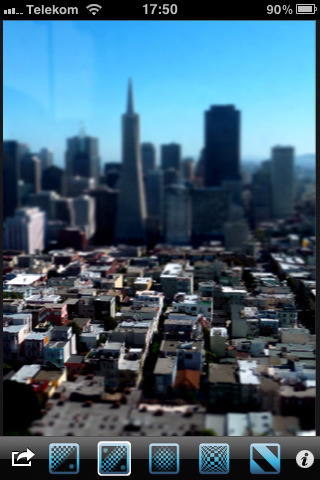
#Tilt shift focus software
It is worth noting that this infinite focus effect is NOT something you can easily achieve in software (although PS does have a function requiring multiple bracketed-focus images that attempts to do so). Some suggest that you can't hand hold this lens so you might as well shoot with a standard lens and use software. It is true that you need a tripod when using TILT. It is laughable that the work around is to hand hold a standard lens and use software. You can't mimic infinite focus unless you start out that way and if you're going to try to use focus-bracketed shots with PS to get close, you still need a tripod for your bracketed shots. When using SHIFT, the feature that allows you to maintain straight vertical lines with architecture and tall trees, you ABSOLUTELY CAN hand hold it. You will achieve the same results (by which I mean blur from camera shake or slight focus inaccuracies from minor movements as you take the shot) as hand holding a standard lens at the same shutter speed and f/stop - minus the keystoning. The same is true when a t/s lens is mounted on a monopod and shifted. When you shift a t/s lens, it is accurate to say that you lose resolution during the process. How much depends on the quality of the particular lens (which, in the case of this lens is outstanding), how far you are shifted, and at what aperture you are shooting.


If you shoot at f/8, the loss is minimal even with an extreme shift, but it is there. However, to suggest that a work around is to use a standard lens and correct the distortion with software completely ignores the fact that you lose even more resolution - significantly more - by "stretching the pixels" in software after capture. So am I suggesting that a standard 24 has no advantages over its tilt-shift brethren? Not at all. The t/s is heavier its manual-only focus system make it unsuitable for situations requiring fast focusing, and it lacks the image stabilization and/or wider apertures available in other lenses. It comes down to choosing the right tool for the job.

My point is that the TS-E 24 II is a very good tool for anyone to suggest it is "useless" is bringing their own knowledge and credibility into question. When I was shooting with the original TS-E 24, the Mk I, I realized that I was making a trade off. I was using a lens with some notable weaknesses in order to take advantage of the benefits that come with being able to tilt and shift. The image quality is phenomenal and the tilt-shift actions give the lens a versatility that, in many ways, cannot be mimicked with software.
#Tilt shift focus full
Is it worth twice as much as the first version? Absolutely! View full Review Use one for a day and you'll understand why. I agree - it is not your everyday lens, not even your every week lens. To be honest, if you do not have a need for it will quickly become your once-in-a-quite-long-long-while lens. Then you may feel disappointed, but it will not be because the product is not good, it will be because you didn't bother to think whether you really need it when buying it. It is also a demanding lens to use - you most probably will use a tripod (unless you have super steady hands, be patient, and take some time to. Btw - architectural and landscape photography, where this lens finds most applications will require a tripod and some patience (when composing) in most cases anyway.
#Tilt shift focus how to
However, when you do need features of this lens and take time to learn how to shoot with it - nothing comes close to quality you will receive.

If anybody claims that he/she can do the same with regular lens and some post processing while retaining the same quality, he/she either never really used this lens or doesn't really needed such lens and doesn't want to spare time to learn how to use it.


 0 kommentar(er)
0 kommentar(er)
